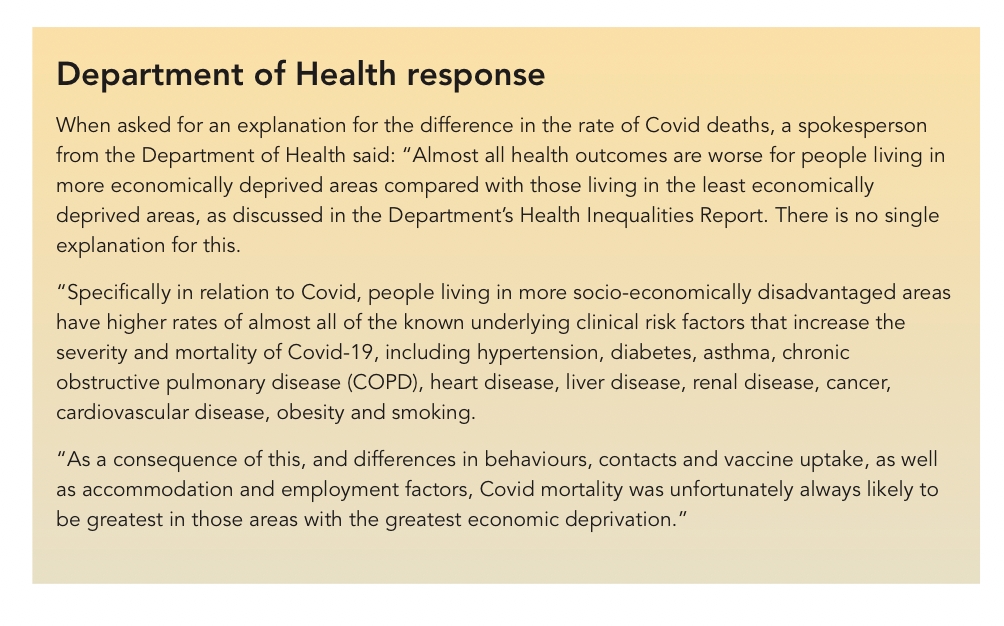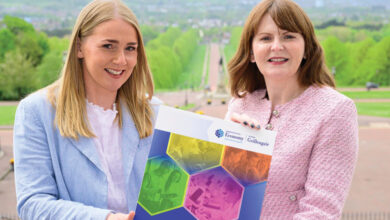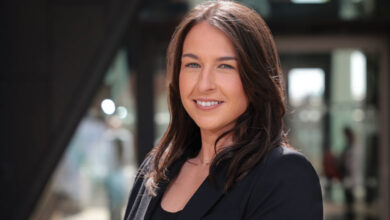Covid health and wealth correlation
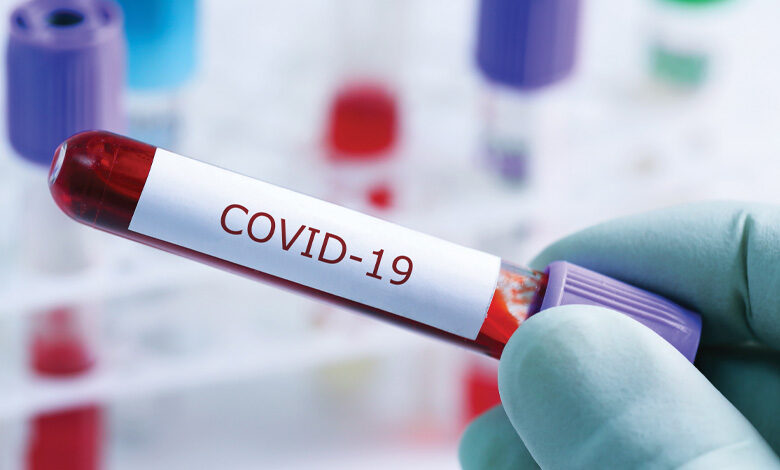
An individual from an economically prosperous area was 90 per cent less likely to die from Covid-19 than an individual from an economically deprived area in 2021, a report from the Department of Health has found.
The Health Inequalities 2023 report is a study which examines the impact of social deprivation on health outcomes, determining whether there is a correlation between economic prosperity by area and health outcomes in each area.
The regional equality gaps take this into account by comparing the health outcomes of people in the 20 per cent most economically deprived areas with the 20 per cent most economically prosperous areas in Northern Ireland.
Notably, the report finds that, in addition to the slight increase in women’s life expectancy inequality, that overall life expectancy has decreased throughout Northern Ireland, in both economically prosperous and relatively economically deprived areas in the region.
Coming from an economically deprived area in Northern Ireland reduces the average male’s life expectancy by 7.3 years and the average female’s by 5.3 years.
Covid deaths
With the 2023 report covering both 2020 and 2021, the full effects of Covid-19 and class background are laid bare, with the stark finding that there was a 90 per cent health difference in the death rate of those who died of Covid-19 from an economically deprived area and those who died from the virus from a prosperous area, in 2021.
The 90 per cent gap from 2021 is a significant increase from the already-notable 25 per cent death gap reported in 2020.
In 2021, there was a rate from Covid-19 of 112 per 100,000 of the population. However, when taking economic background into account, those from economically deprived areas had a death rate of 147 per 100,000 diagnosed, compared with a rate of 77 deaths per 100,000 of those diagnosed in an economically prosperous areas.
The report notes that the Covid-19 deaths are explicitly those who died from the virus, and that it does not include deaths reported to the Public Health Authority where the deceased had a positive test for Covid-19 and died within 28 days, where subsequently Covid-19 was not registered on the death certificate as the cause of death.
Mental health inequality
A further potentially Covid-related trend was the mental health outcomes of those throughout 2020 and 2021, with a notable increase in the gap of alcohol-related deaths and rates of addiction in the second year of the pandemic.
2021 saw an increase of 36 per cent in alcohol-related deaths, bringing the economic background gap up to a staggering 342 per cent. When looking at the proportional alcohol-related death rates, the report finds that there was a death rate of 38.3 per 100,000 of those from an economically deprived background, compared with a rate of just 8.7 per 100,000 of those from an economically prosperous area.
The figures on alcohol-related deaths are correlated by an increase in the gap of suicide rates between those who live in relative wealth and those who live in relative deprivation. Between 2020 and 2021, the suicide gap increased by 17 per cent, leaving a gap of 114 per cent overall.
Despite the increase in suicide and alcohol-related deaths, the mood and anxiety gap, whilst remaining high, did not increase, suggesting that the knock-on effect on mental health services throughout the Covid-19 pandemic has made the consequences for those suffering from anxiety and low mood more severe.
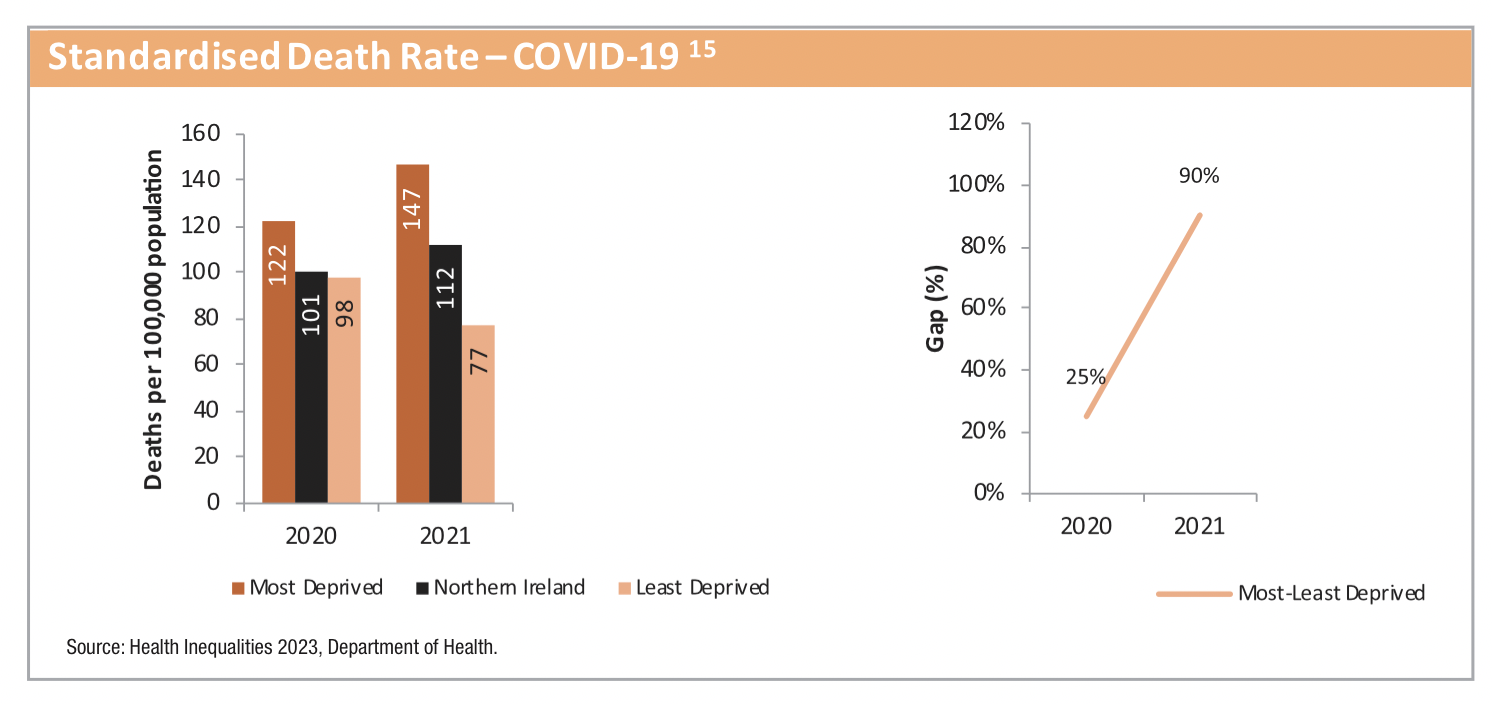
Pregnancy and early years
One section positively impacted by the Covid-19 pandemic was that of infant mortality. Both the overall rate of infant mortality and the equality gap of infant mortality rates decreased between 2020 and 2021.
In 2021, the infant mortality rate gap by socioeconomic background was 28 per cent, down from a gap of 42 per cent in 2020.
Rates of teenage pregnancy also narrowed significantly, although the gap remains wide, with the 2021 figure showing a gap of 358 per cent by socioeconomic background. However, it is noteworthy that this figure is down from the 2020 figure of 611 per cent.
